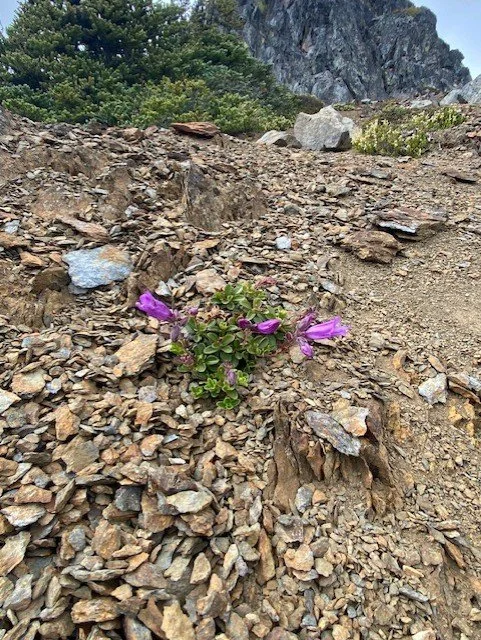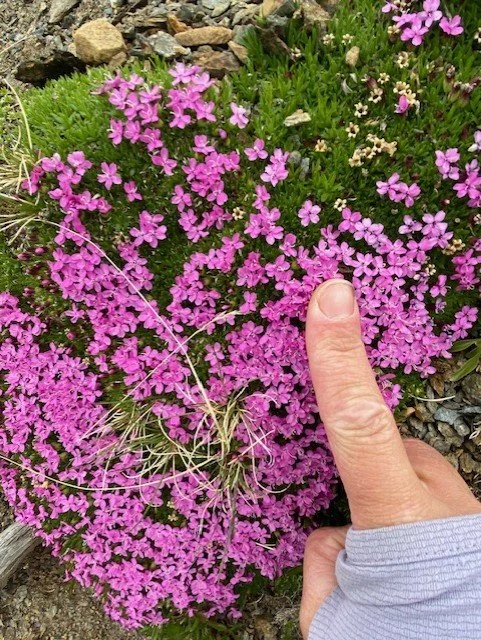Alpine ‘Dwarf’ Rock Gardens of Mt. Larrabee
This year, rather than celebrate Independence Day in its typical loud and explosive fashion, I opted to hike and scramble to the serene mountain summit of Mt. Larrabee, via the High Pass trail. Because my plan was to take only a short afternoon for this mission, it was meant to be a purposeful and quick hike. However, without any climbing partners to keep me on pace, I easily became distracted by the beautiful blooms and opportunities for botanizing. Since I recognize my lack of recall for alpine wildflowers, I welcomed the opportunity to slow down, distracted by each unique species. I hope you’ll enjoy this brief photo journal as well.
Anemone occidentalis:
As I first set on the trail and ascended towards Low Pass, the Western pasqueflower caught my eye over and over again. Though not ‘dwarfed’ in stature, I find that I rarely catch this plant in flower as they are some of the first to bloom after the snow recedes. More often than not, I enjoy their presence as seed heads, when the plant is similar in appearance to Dr. Suess’ ‘truffala trees’. [If you’re not sure what I’m referring to, that I recommend you Google 'western pasque flower seed heads’.]
Castelleja rexifolia and Penstemon davidsonii:
While there is a large amount of variety in the genus Castelleja (of the common red paintbrush), this Alpine Red Paintbrush was apparent to me because of its squat height and its purplish bracts. The Davidson’s Penstemon (below) I recognized immediately as well, for I adore its waxy, evergreen foliage, and I have even planted it at a few jobs this past spring, as I found it available at a local nursery. You’ll see a photo of it in its soft purple bloom just below this excerpt.
Penstemon davidsonii
Phlox diffusa- As the terrain began to incline, I began to see Spreading Phlox among the rocks.
Finally, I happened upon this gorgeous and diverse ‘dwarf’, rocky meadow! This is where I realized there were too many plants distracting me to keep pace on my climb. I had to take care taking photos—for obvious reasons.
Phacelia sericea: The Sky-Pilot is not a plant I see too often, but I found it quite striking. It’s difficult to see in the photo, but the blooms have bight yellow stamens protruding. Also difficult to see in the photo is the cluster of Sedum oreganum tucked just below this plant’s silvery foliage.
Saxigraga oppositifolia:
I was somewhat unfamiliar with Purple Mountain Saxifrage, but was drawn to it by their extremely tiny flowers and foliage, as well as their scale-like leaves that are actually feel like a hard mound rather than a soft cushion to the touch. I’ve included my finder above to illustrate just how tiny the blooms are, and a close-up on the odd scale-like foliage in the image below this excerpt.
Again, the Saxigraga oppositifolia, but illustrating its unique leaf structure.
Romanzoffia sitchensis: Sitka mistmaiden.
Potentilla villosa: Villous cinquefoil
Arctostaphyslos uva-ursi:
Planted in many of our lowland projects, it was wonderful to see this specimen of kinnikinnick as I descended from my hike. It’s a great reminder of how hearty this coastal evergreen can be.











